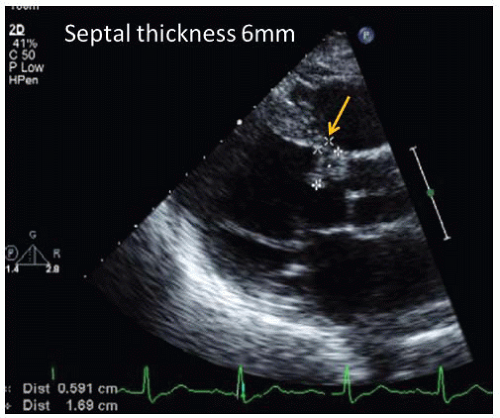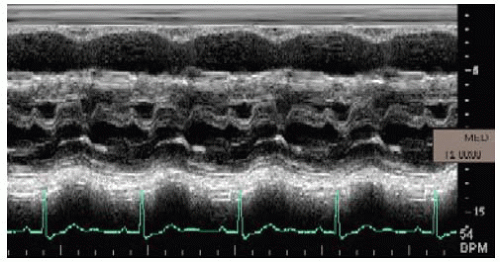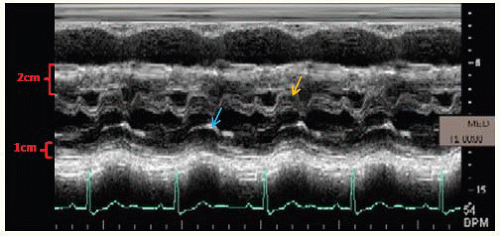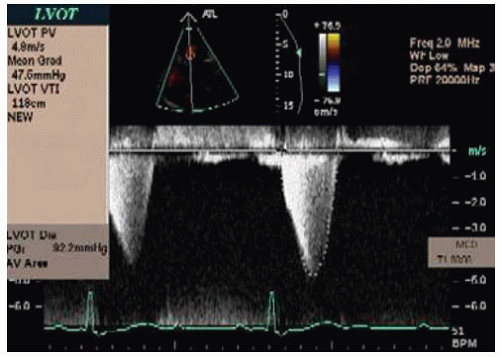Hypertrophic Cardiomyopathy with Lymphoma
A 71-year-old woman presents 2 years after successful alcohol septal ablation for hypertrophic cardiomyopathy. She was recently diagnosed with lymphoma and has subsequently developed new onset congestive heart failure (CHF).
QUESTION 1. Based on the parasternal long-axis and apical views (Fig. 63-1 and Video 63-1), which of the following is most likely correct?
A. Patient has developed heart failure due to lymphoma infiltrating the myocardium
B. CHF is associated with left ventricular dysfunction from chemotherapy
C. Patient has had a recurrence of hypertrophic cardiomyopathy physiology with systolic anterior motion of the mitral valve (SAM), mitral regurgitation (MR), and left ventricular outflow tract (LVOT) gradient
D. Heart failure due to a ventricular septal defect after alcohol septal ablation
View Answer
ANSWER 1: C. Patient has had a recurrence of hypertrophic cardiomyopathy physiology with SAM, MR, and LVOT gradient.
QUESTION 2. Which of the following is not demonstrated on the motion (M)-mode echocardiogram (Fig. 63-2)?
A. Asymmetric septal hypertrophy
B. SAM
C. Mitral annular calcification (MAC)
D. Mitral stenosis
View Answer
ANSWER 2: D. Septum measures 2 cm, and the inferolateral wall measures 1 cm.
There is no evidence of mitral stenosis on the M-mode echocardiogram.
 Figure 63-6.
Stay updated, free articles. Join our Telegram channel
Full access? Get Clinical Tree
 Get Clinical Tree app for offline access
Get Clinical Tree app for offline access

|





